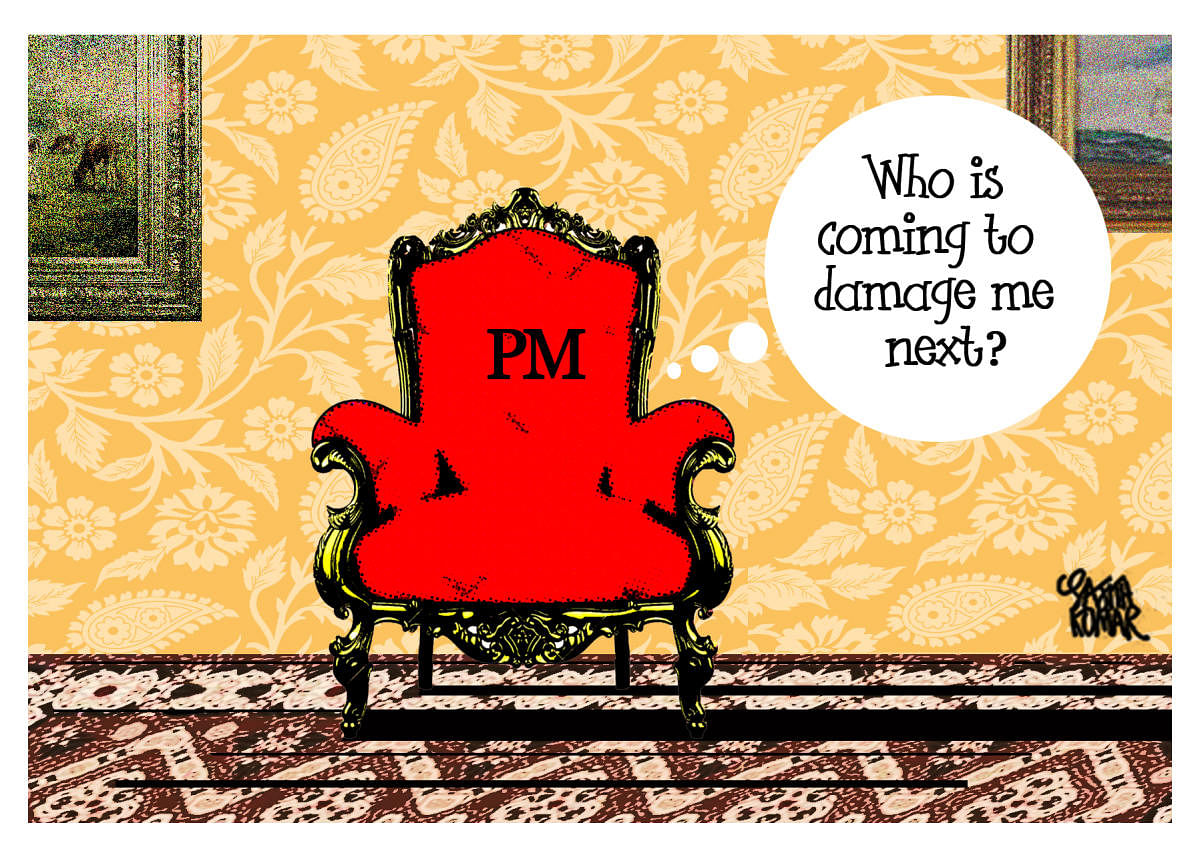
As voting for the last phase of Lok Sabha polls concludes today, unlike in 2014, there is so much uncertainty this time over who will form the next government and who will be the next prime minister. The uncertainty is such that the ruling BJP, even as it put up a brave façade of winning more than 300 seats by itself, also held an unprecedented press conference in which Prime Minister Narendra Modi silently “accompanied” BJP president Amit Shah, whose main message was that the party’s “doors were open” for new allies. Meanwhile, the Congress flip flops from “will not insist on leadership role to form non-BJP government” on one day to “we are very much in the race” the next. Sensing a 1996-like situation, regional satraps like Chandrababu Naidu (TDP) K Chandrasekhar Rao (TRS), Mayawati (BSP) and Mamata Banerjee (TMC) have all thrown their hats in the ring. So, who will be the next PM?
Firstly, despite all caste calculations and alliances, the BJP is clearly emerging as the single largest party, and so far, its leadership is firmly in Modi’s hands. Reports from the ground suggest that while Opposition alliances have created much discomfort for the BJP in a number of states, there is also, especially in the Hindi heartland, an undercurrent in Modi’s favour after the Balakot airstrike on Pakistan. It is one of those rare elections in which foreign and security policy is a poll issue, with Modi supporters in cities and villages alike saying, “Modi has given India’s image a boost abroad.” So, while the arithmetic of alliances suggests that the BJP’s “all is well” refrain isn’t true, neither is there an anti-Modi sentiment strong enough in large swathes of north, central and east India to throw him out. In the backdrop of these conflicting echoes, there are a range of scenarios and, if it is not to be Modi, then a range of PM probables.
Scenario 1: BJP gets clear majority. There is no dispute over who will be the next PM – Narendra Modi.
Scenario 2: NDA gets majority, with BJP winning more than 200 seats. In this scenario, too, Modi will be PM, as both allies and the RSS will fall in line to maintain status quo in leadership. Potentially troublesome allies like Shiv Sena and JD(U) will not have much room to play pressure tactics. But Modi and Shah will have to much more accommodative. For instance, the old demand for setting up the NDA Coordination Committee, which existed during Vajpayee’s tenure, could resurface. In 2014, with 282 seats, Modi did not accept this demand of allies.
Scenario 3: NDA falls short of clear majority, with BJP having about 180 seats and the NDA 220-250 and scrambling for new allies. This is the scenario that will see pressure tactics and personality clashes within NDA. There could be rumblings from within for a change of leadership in BJP. Nitin Gadkari and Rajnath Singh, perhaps even Sushma Swaraj, come into picture. Maybe Modi himself would not want to be PM in this situation in which the post will prove to be a “crown of thorns” and decision-making won’t be easy.
Scenario 4: NDA falls below 220, Congress wins 125 seats, UPA 170+, Others 160-170. The BJP will not like to rush into forming government, keeping in mind Vajpayee’s experience of falling twice from the ‘gaddi’ – first time after just 13 days and the second time after 13 months. BJP will rather prefer to sit in the opposition -- as Rajiv Gandhi did in 1989, when Congress was reduced to 197 seats from the high of 415 in 1984 – and wait for whichever rag-tag coalition forms government to fall on its own. Rajiv politely declined the President’s invite to the single largest party to form government and instea let his nemesis VP Singh form a National Front government, supported from outside by the BJP and the Left. It fell under the weight of the Mandal vs Kamandal politics of the era. Lalu Yadav arrested LK Advani, who was on his Rath Yatra, in Bihar; the VP Singh government implemented 27% reservation for OBCs. Angered by both, the BJP withdrew support. On its part, Congress is aware of the pitfalls of venturing to form a government under its leadership without adequate numbers. In 1999, when it had 114 seats – its second lowest-ever tally -- Mulayam Singh Yadav first announced support for Congress and then ditched it.
This is the scenario that the non-NDA block of regional parties is eyeing this time, hoping for Congress support from outside. But there will be tension in such an arrangement. The Congress led a coalition government in 2004 with only 145 seats (and improved its tally to 206 in 2009, winning re-election) and would like to lead the coalition again. Especially as there is no united Janata Dal, which used to win a block of 50-70 seats, nor the Left, which too used to win a similar number of seats. Neither Mamata nor Mayawati will have more than 30-35 seats at maximum, strengthening Congress’ claim.
Scenario 5: NDA falls below 220, Congress/UPA below 100/160, Others 170. This is the sort of 1996 scenario in which HD Deve Gowda became PM with only 16 MPs, with Congress supporting from outside. This time, even the BJP could prop up such a government, not just Congress, and pull it down anytime they want. This is also a scenario in which there would be intense competition among the regional leaders for the top slot. And mind you, not all regional leaders are averse to the BJP’s charms. In the past, many of them have worked well with the BJP. Like Odisha CM Naveen Patnaik, who had run a coalition government with the BJP; and the RSS’ liking for Nitish Kumar is well-known.
Of course, it is also possible that Nitish Kumar does another somersault and joins the secular block again. Mamata Banerjee, who was part of Vajpayee’s NDA, has a bitter relationship with the Modi-Shah duo, but a relatively warm relationship with Sonia Gandhi.
Meanwhile, Mayawati, who has never hidden her PM ambition, will be too potent a candidate to be propped up if either of the national parties is planning only for a short-term arrangement. Mayawati cannot be the choice because her strength – the sway over Dalit vote – will be her weakness. No party can afford to prop her up and then bring her down mid-term without alienating Dalits.
The DMK’s MK Stalin has been the staunchest backer of Congress and Rahul Gandhi for PM. When the numbers emerge on May 23, it could well be payback time for Congress to back him to lead a coalition that it supports. Among the elders, NCP’s Sharad Pawar and the BJD’s Naveen Patnaik are the front-runners in a non-BJP coalition scenario.
It’s a long wait till May 23 for these games to begin to unfold!
